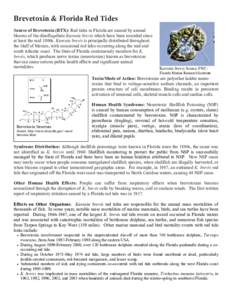<--- Back to Details
| First Page | Document Content | |
|---|---|---|
 Date: 2006-05-09 07:18:25Algae Aquatic ecology Biological oceanography Dinoflagellates Karenia brevis Red tide Algal bloom Brevetoxin Karenia Water Biology Fisheries |
Add to Reading List |
| First Page | Document Content | |
|---|---|---|
 Date: 2006-05-09 07:18:25Algae Aquatic ecology Biological oceanography Dinoflagellates Karenia brevis Red tide Algal bloom Brevetoxin Karenia Water Biology Fisheries |
Add to Reading List |